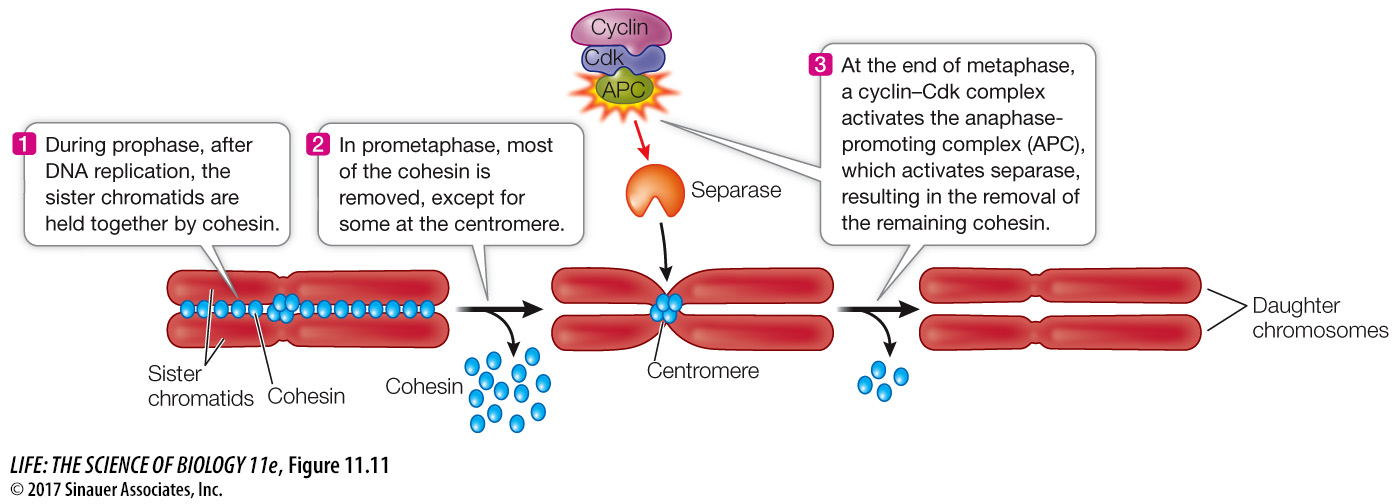Chromosome separation and movement are highly organized
During the next three phases of mitosis—prometaphase, metaphase, and anaphase—dramatic changes take place in the cell and the chromosomes (see Figure 11.9). During prometaphase, the nuclear envelope breaks down and spindle formation is completed. During metaphase, the chromosomes line up at the equatorial position of the cell. Now let’s consider two key processes of anaphase: separation of the chromatids, and the mechanism of their actual movement toward the poles.
CHROMATID SEPARATION The separation of chromatids occurs at the beginning of anaphase. It is controlled by an M phase cyclin–Cdk (see Figure 11.5), which activates another protein complex called the anaphase-promoting complex (APC). Separation occurs because one subunit of the cohesin protein holding the sister chromatids together is hydrolyzed by a specific protease, appropriately called separase (Figure 11.11). A cell cycle checkpoint, often called the spindle assembly checkpoint, occurs at the end of metaphase to inhibit the APC if one of the chromosomes is not attached properly to the spindle. When all chromosomes are attached, the APC is activated and the chromatids separate. After separation the chromatids are called daughter chromosomes. Note the difference between chromatids and chromosomes:
Chromatids share a centromere.
Chromosomes have their own centromere.

Figure 11.11 Chromatid Attachment and Separation The cohesin protein complex holds sister chromatids together at the centromere. The enzyme separase hydrolyzes cohesin at the end of metaphase, allowing the chromatids to separate into daughter chromosomes.
CHROMOSOME MOVEMENT The migration of the two sets of daughter chromosomes to the poles of the cell is a highly organized, active process. Three mechanisms operate to move the chromosomes along. First, the kinetochores contain molecular motor proteins, including kinesins and cytoplasmic dynein (see Figures 5.18 and 5.19), which use energy from ATP hydrolysis to do the work of moving the chromosomes along the microtubules. Second, the kinetochore microtubules shorten, drawing the chromosomes toward them. Third, the centrosomes move apart, aiding in separation. The last stage of mitosis is telophase, when the spindle disappears and a nuclear envelope forms around each set of chromosomes (see Figure 11.9). Finally, the cytoplasms of the two daughter cells separate during cytokinesis: the last stage of cell division.
Media Clip 11.1 Mitosis: Live and Up Close
